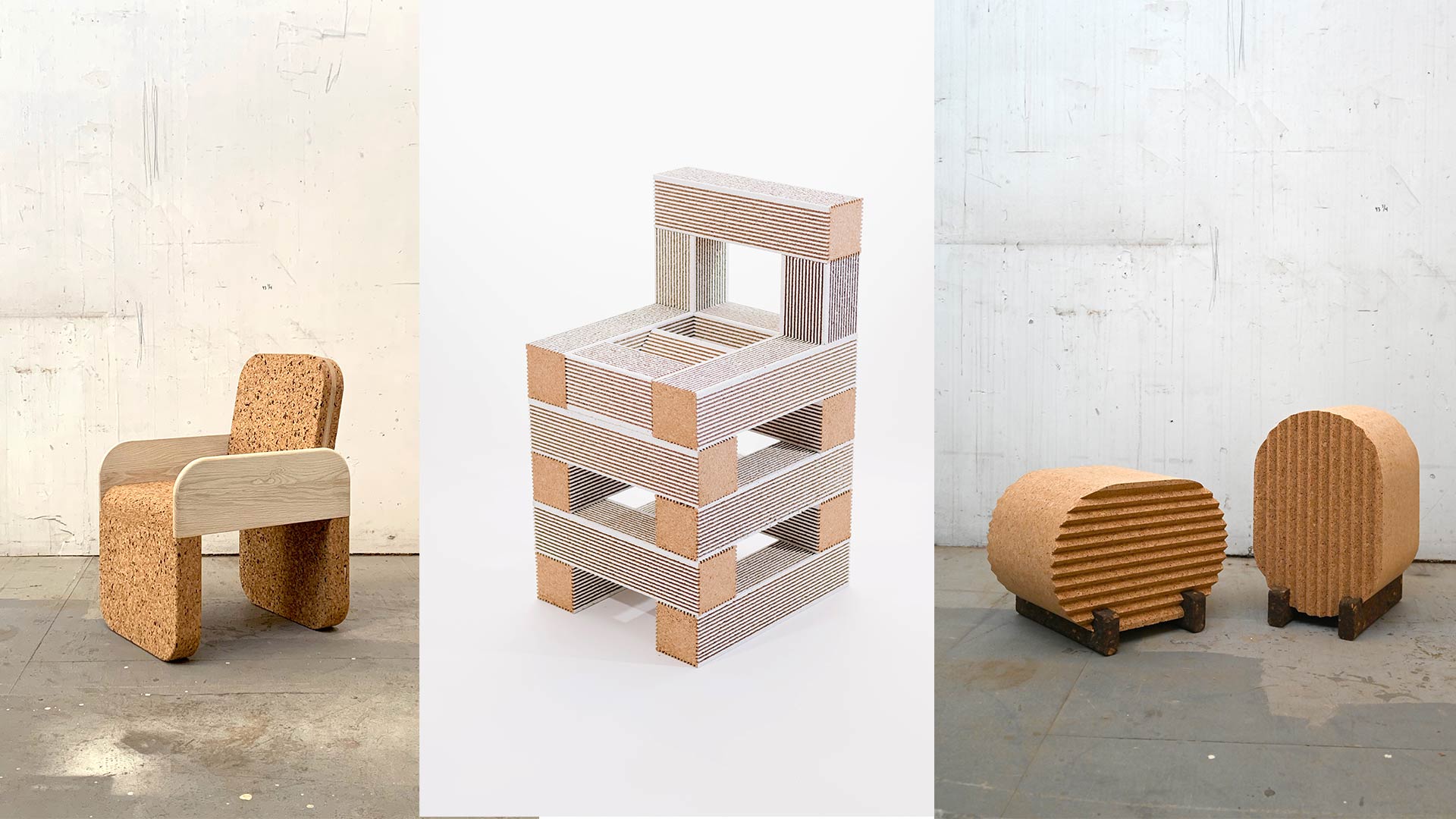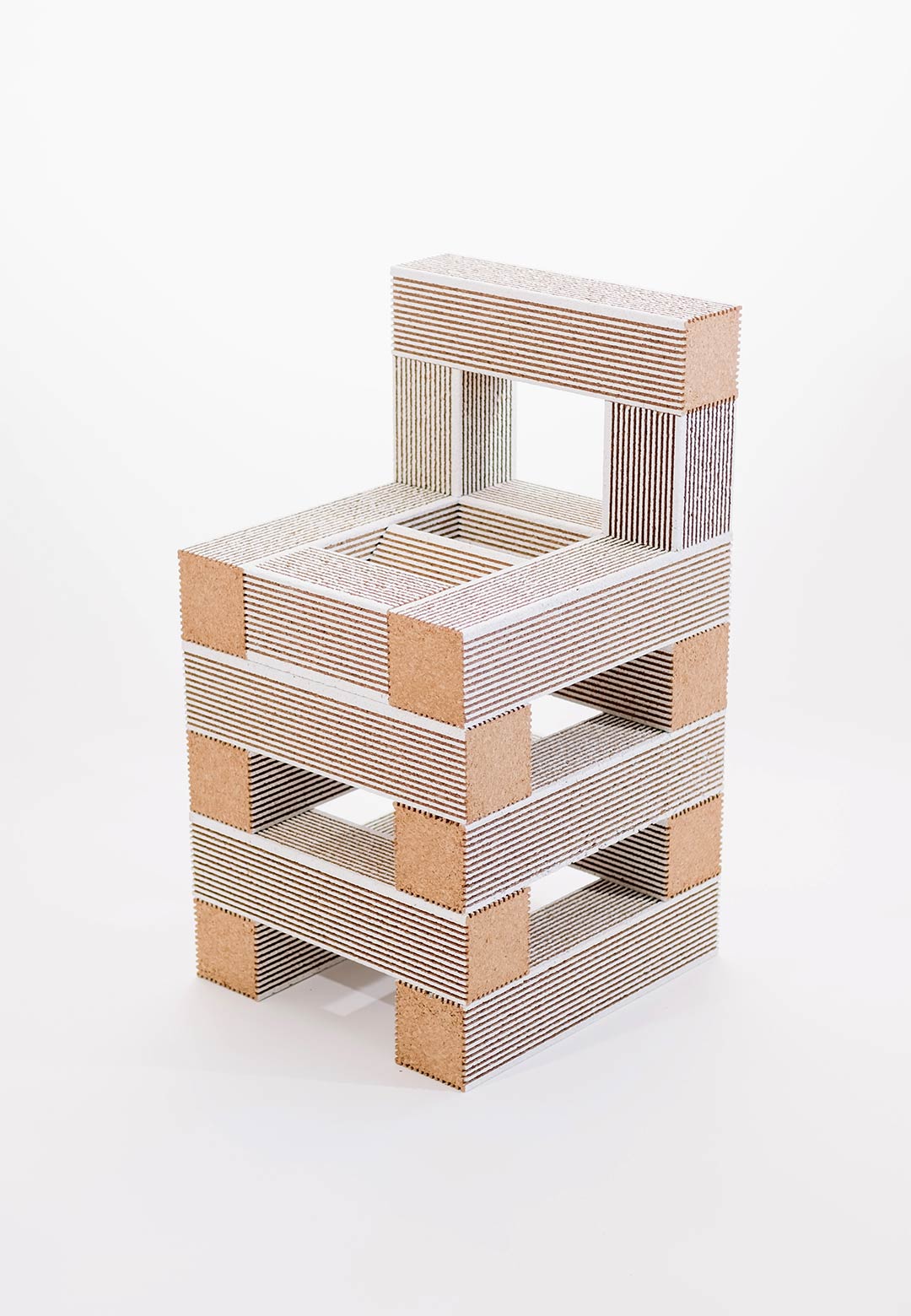Although wood has been used continually as a building material, within the creative realms of architecture and product design, since the first instances of human invention and innovation, one rarely witnesses the usage of cork beyond pegs for champagne bottles, surfaces of soft boards, or coasters. Its typical usage seems strangely limited when one realises its potential as a sustainable building material, as it does not require the felling of fully grown trees or even its branches.
This is the premise that inspired American designer Daniel Michalik to scout cork and experiment with the material to produce an array of furniture, toys and homeware objects. Michalik, who resides in Brooklyn, New York in the USA, primarily focuses on research and experimentation with overlooked materials to ‘create objects that explore the intersections of material, culture and manufacturing.’ Having discovered cork as an engaging and sustainable material, the researcher, educator and product designer embarked on a journey of building an assortment of objects with it. So far, he has crafted myriad products ranging from vases, vessels, bowls, 'stashtrays,' planters, doorstops, toys, cutting boards, candleholders, plates, bracelets, boxes, coasters, chairs, stools, and benches with the material.
While the designer’s creations are driven by an urge to create novel shapes and forms using moulds that are not only aesthetically derived but also usable, Michalik also borrows cues from other cultures and practices to imbue his pieces with motifs, patterns and sciographies that evoke familiarity. For example, Michalik’s 'Striated Chair,' boxy in form and imbued with a criss-cross pattern native to the cork-growing regions of Portugal, has a surface painted white and serves to highlight the amalgamation of ancient and future building techniques. Most of Michalik's furniture pieces are put together using the most direct technique of stacking—the brick laying method.
Michalik utilises the expansion-moulded scraps to build several of his sustainable designs—These scraps are made out of bits of bark and branches which are fused together with heat. To truly embody the sustainable usage of cork in his designs, the designer utilises recycled cork as well, to build stools, chair designs, candleholders and toys. While smaller products manufactured by Michalik come in cohesive formats, larger furniture products are detachable. The designer strives to create furniture with varying functions, to establish cork as a versatile material. From stools that can function as side tables, chairs that derive inspiration from shaker dining chairs to benches with multiple seats, chairs with and without armrests as well as those for the role of lounging or studying, Michalik has, in the past few years, managed to build all kinds of furniture designs required for regular usage.
The vases and vessels built by him also manage to serve multiple functions—They can hold flowers or wine bottles, function as pen holders or as singular pieces for decoration. To accommodate water (in the case of vessels) and ashes (in the case of urns), Michalik often combines cork with an inner lining of aluminium. To add a playful touch to the toys and homeware objects, he proceeds to colour them in hues of blue, green, pink, or sometimes, a contrasting brown.
STIR speaks with the furniture designer, delving into his body of work, the research he undertakes for them, and his plans.
Almas Sadique: What are some ideas and styles that inspire your body of work?
Daniel Michalik: The way humans build structures, and the way nature shapes structures inspires my work, and trying to bring those two things together, or as close as possible is what narrates the process. I am interested in the idea of materials as something that comes from nature but is shaped by humans into neat little geometric forms in order to achieve efficiency. There is wisdom in traditional human ways of building, but also in materials that regenerate and foster growth and life instead of depletion. The 'Striated Chair' as well as the 'Mozelos Stool' were both inspired by gazing out the window of my studio, at all the new construction happening all over New York, but also equally by traditional Portuguese crafts in the cork region, where objects like stool designs are made by a simple piece-by-piece construction methods.
Almas: Tell us about your formative experiences as a designer, and some of your learnings over the years.
Daniel: I remember early on in my learning process, experimenting with cork, and seeing how it performed in ways that no other material could, and also in ways in which it had never been used. It felt like I had just discovered a new world full of potential. I am still fascinated by the potential of cork, but I am also interested in the material from a systemic point of view, as a material that increases its positive ecological effectiveness as humans plant and harvest trees, and use the material in many different applications.
Almas: How do you usually approach new projects?
Daniel: I have always started new projects with 3D sketching, where I experiment with cork as a material in three dimensions using basic tools to achieve new types of forms and performances. This holds true as I develop new pieces, but when I work with clients on a project that has specific goals or needs, I usually work with them to better understand cork as a material, wherein, it cannot just take any form they want, that it has very specific and often unusual parameters, and we develop a project that is in line with the material.
Almas: What does a typical day at your studio look like?
Daniel: I am involved with lots of different projects. I also teach as a Professor of Industrial Design at the Parsons School of Design. Sometimes, I spend half my day teaching and the other half in my studio. On other days, more time is spent within the studio. Hence, I do not typically have the same tasks at hand every day. I have also been travelling quite a bit recently—for example, in 2022, I took a six-month-long sabbatical. I was based in London during that time, but also travelling to the cork regions of Portugal to research the system of cork agriculture and industry. I also just got back from teaching a one-week cork workshop in Barcelona, followed by a trip to the wild cork forests of Catalunya. Every day is different and brings new adventures and work schedules!
Almas: How do you acquire the materials that you work with? How are they processed to achieve the final objects, and how are they disposed of, after the pieces wear down?
Daniel: Cork is the bark of the cork oak tree—it is the material basis of all of the products we produce. It is harvested from the tree every nine years (for Portuguese cork) and instead of depleting the forest or harming the tree, it increases the density and overall health of the forest. So, more carbon is pulled from the atmosphere as we use the material for products. Plus, once the cork is moulded into usable blocks or other shapes, it is almost endlessly recyclable, meaning our products can be returned to us for repair or even recycling. There is no waste in our process, and our material use contributes to the decarbonisation of our environment.
Almas: What is NEXT for you?
Daniel: I am working on a research and writing project to tell the story of cork. Its usage in building fosters the growth, interdependence, and systems of nature that support life on Earth. I plan on producing a book that delivers this story of sustainability, in a manner such that my research, teaching and practical usage in product design comes together to form a coherent structure.






 Sign in with email
Sign in with email










What do you think?